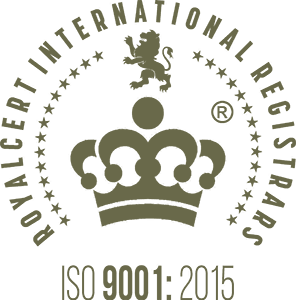The global aviation industry recovered remarkably well from the COVID-19 pandemic. Despite facing multiple challenges such as labor shortages, inflation, snarled supply chains, and geopolitical conflicts, the industry is almost back at 2019 levels. The global fleet is now at 98% of its pre-pandemic level, airlines are daring to contemplate profitability, and aerospace manufacturers are looking at bumper years ahead.
As of February 2023, the worldwide commercial fleet stood at almost 27,400, just short of its pre-pandemic strength in January 2020; by 2033, it is projected to expand by 33% to over 36,000 aircraft. Additionally, the aviation aftermarket, the aircraft maintenance, repair, and overhaul (MRO) services, has expanded 18% in 2022. It is expected to grow 22% during 2023 to reach US$94 billion.
However, the aviation industry still faces numerous challenges, including tight labor markets and supply chain issues that may hinder future growth.
Labor shortages, Supply Chain Bottlenecks and Pricing
A global shortage of workers across is affecting pilots, mechanics, and ground crew. North America is expected to face a supply gap of 18% of the total pilot workforce and 14% of aviation mechanics in 2023. The shortage of pilots has led to significant service reductions particularly for regional airlines. Europe faced severe ground crew shortages in 2022, and India is looking at shortages of air traffic controllers as it plans a rapid expansion of its aviation industry.
Adding to this are supply chain problems which are causing longer lead times on parts, causing delays in production and maintenance, sometimes exceeding a year. With Airbus and Boeing planning to implement higher production goals, supplier capacity problems will multiply potentially beyond the sector’s capacity.
Combined with higher demand for aircraft, these two issues are pushing up prices of everything from jet fuel and aircraft parts to workforce salaries, leading to higher operating costs.
Climate Change
Nor are these the only challenges the aviation industry is dealing with. Climate change and greenhouse gas emissions are huge dark spots on the horizon and must be urgently addressed.
France’s recent legislation prohibiting air flights between destinations that are served by a train ride of 2.5 hours or less may just be the first of a raft of restrictions to come, particularly in Western Europe. And though the industry is constantly innovating to build more efficient engines and efficient aircraft, strong and rising demand for air travel from growing markets such as India and Saudi Arabia suggests it will be manoeuvring constantly for the next few years to stay ahead and keep emissions under control.
A large bottleneck is the lack of ‘commercially viable’ alternatives to internal combustion jet engines for commercial airliners. Although sustainable aviation fuel (SAF), which emits 50% to 80% fewer greenhouse gases than traditional jet fuel, is a possibility, not only is it an extremely expensive substitute, there just isn’t enough of it around: just about a third of the amount needed by 2030 to keep emissions down to 2019 levels.
To address this issue, the aviation industry must work together to develop and invest in sustainable solutions that reduce emissions without compromising safety and affordability. Governments can also play a critical role in supporting the development of new technologies and incentivizing their adoption. It is essential that the industry takes a proactive approach to address climate change and reduces its impact on the environment for the long-term sustainability of the industry.
Geopolitics
Finally, the impact of geopolitical tensions on aviation cannot be overstated. The sanctions on Russia have had a significant impact on the global aviation industry, with limited access to raw materials and Western-manufactured aircraft and parts. This has resulted in Russian carriers being forced to harvest parts from their current fleets to keep other planes flying. The reduction in the Russian fleet by 25% by 2033 due to these sanctions will undoubtedly have an impact on the global aviation market. The increasing competition between the Western aerospace manufacturers that dominate the industry and China’s fledgling aerospace industry will also impact aircraft orders and the supply chain in different ways.
Conclusion
Despite the challenges the aviation industry is facing from demand and supply to policies and regulations to geopolitics and climate change, our experts believe the forces of demand, innovation and national economic strategies will serve as relentless drivers of growth. We remain optimistic the industry will be able to navigate the storm clouds ahead by being prepared. We believe that collaboration and open communication between industry stakeholders in both the public and the private sector will be crucial to building and maintaining the industry’s resilience.
Data: Oliver Wyman 2023



